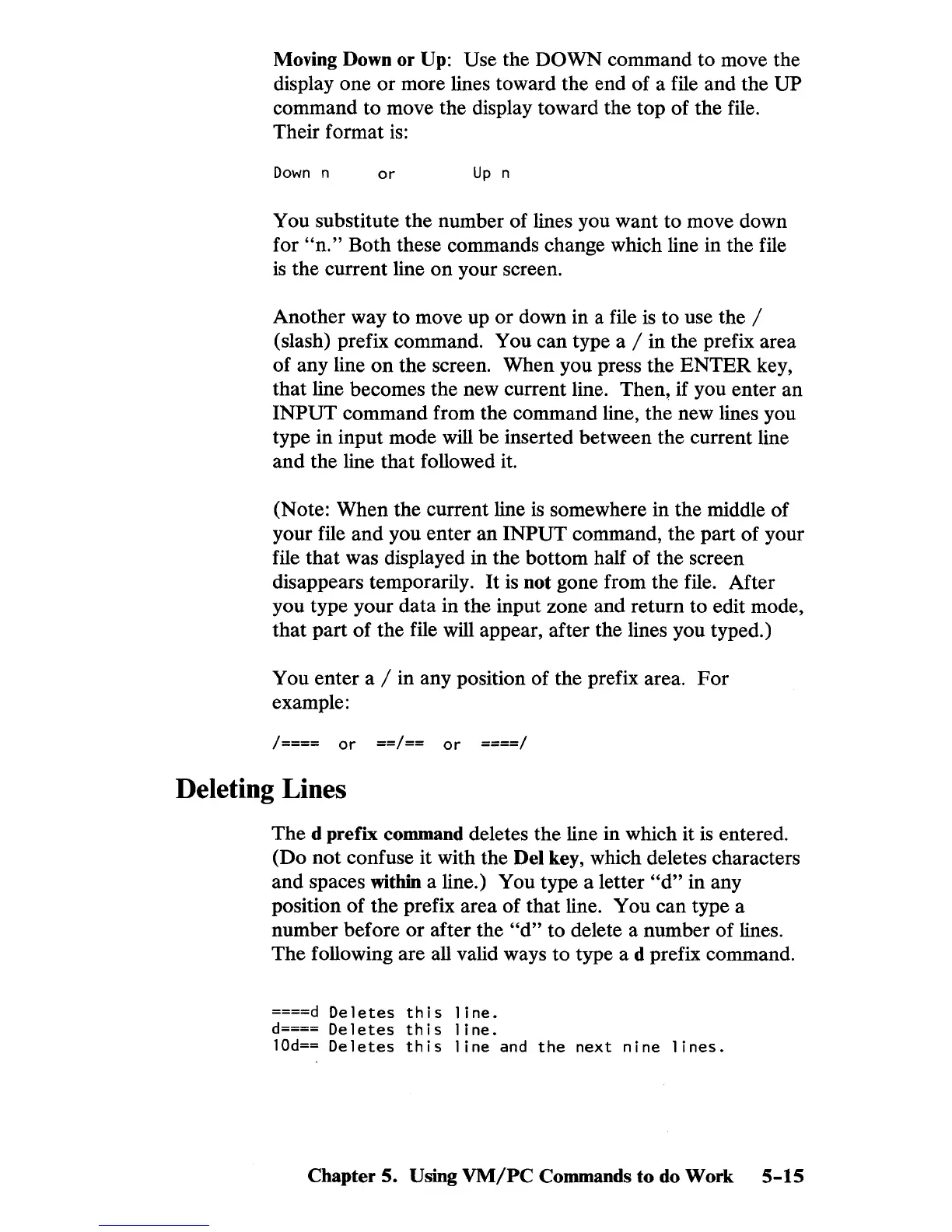Moving Down or Up: Use the
DOWN
command
to
move the
display
one
or
more lines toward the end of a file and the
UP
command to move the display toward the
top
of
the file.
Their format
is:
Down n
or
Up
n
You substitute the number of lines you
want
to
move down
for
"n."
Both
these commands change which line in the file
is
the current line
on
your screen.
Another
way
to
move up
or
down in a file is
to
use the /
(slash) prefix command. You
can
type a / in the prefix area
of
any line
on
the screen. When
you
press the
ENTER
key,
that
line becomes the new current line. Then, if you
enter
an
INPUT
command from the command line, the new lines you
type in input mode will
be
inserted between the current line
and
the line
that
followed it.
(Note:
When
the current line
is
somewhere in the middle
of
your file
and
you
enter
an
INPUT
command, the
part
of your
file
that
was displayed in
the
bottom
half of the screen
disappears temporarily.
It
is not gone from
the
file. After
you type your
data
in the input zone and return
to
edit mode,
that
part
of
the file will appear, after the lines you typed.)
You
enter
a / in any position of the prefix area.
For
example:
/====
or
==/==
or
====/
Deleting Lines
The
d prefix command deletes the line in which it is entered.
(Do
not
confuse it with the Del key, which deletes characters
and
spaces within a line.) You type a letter
"d"
in any
position
of
the
prefix area
of
that
line.
You
can
type a
number before
or
after the
"d"
to
delete a number
of
lines.
The
following are all valid ways
to
type a d prefix command.
====d
Deletes
this
line.
d====
Deletes
this
line.
lOd==
Deletes
this
line
and
the
next
nine
lines.
Chapter 5. Using
VMjPC
Commands
to
do Work
5-15

